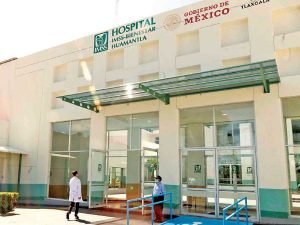Visits
IMSS-Bienestar hires 53,000 workers and reaches 96% of national supply with investment of more than 2,700 million
Juan R. Hernandez
Mexico City.- A little more than a year after assuming the general direction of the IMSS-Wellbeing, Alejandro Svarch Pérez presented before the Chamber of Deputies a detailed assessment of the progress of the federalized health system, highlighting its consolidation as the backbone of the new public health policy.
With an effective presence in 23 states, the model IMSS-Wellbeing It has integrated thousands of state workers and expanded medical coverage for millions of people without social security.
During his appearance, Svarch stressed that the IMSS-Wellbeing It currently coordinates 8,336 health centers and 598 hospitals, making its network the largest in Latin America. This territorial deployment has been key to serving rural communities and highly marginalized areas. “Health cannot be a privilege or a political loot; it must be the new pact of national unity,” he stated.
In labor matters, the official highlighted the dignity of health personnel as one of the pillars of the project. In recent months, more than 53,000 workers have been hired, including doctors, nurses and administrative staff, to strengthen care at all levels.
Added to this is the incorporation of 1,972 new professionals, of which 1,135 are nurses and 837 specialist doctors. This expansion has been supported by a public investment of more than 2.7 billion pesos, aimed at improving infrastructure and human resources.
Another relevant advance is the supply of medicines, which reached 96% national coverage, overcoming historical lags. This achievement responds to a comprehensive strategy of logistics consolidation and national production, aimed at guaranteeing continuous supply in hospitals and reducing dependence on foreign supplies.
Svarch also reported on the digital modernization of the hospital system, with the implementation of platforms for monitoring clinical records, control of supplies and administrative management. These tools have improved the operational efficiency and traceability of medical services. In parallel, the rehabilitation of more than 1,200 medical units has been achieved, through corrective and preventive maintenance in health centers located in remote regions.
“The fragmented model of the past is being replaced by a single, universal and free system. Our goal is to guarantee that no Mexican is again excluded from access to medical care,” Svarch assured legislators.
In that sense, he announced that the federal government is working on an Organic Law of the IMSS-Wellbeing, with the purpose of institutionalizing the model and ensuring its continuity beyond political cycles. The initiative seeks to provide legal support for the right to health and protect the achievements achieved during the federalization process.
In parallel, Sonia Ordóñez, director of General Services of the IMSS-Wellbeing, presented the results in terms of infrastructure and operational logistics that have accompanied the expansion of the system.
He highlighted the rehabilitation of more than 1,200 health centers, the incorporation of 300 new ambulances, the training of 5,000 operational workers and the optimization of drug distribution routes, which have allowed supply coverage to be maintained at record levels.
Ordóñez recognized that efficiency in general services “is the invisible support that allows medical care to function with dignity and continuity.”
With these advances, the IMSS-Wellbeing It is consolidated as the central axis of the structural transformation of the Mexican public health system, guaranteeing free medical care, decent employment and national coverage under a model of equity and efficiency. Under the leadership of Alejandro Svarch Pérez, The organization has translated the presidential mandate to universalize health into a tangible policy of results.


